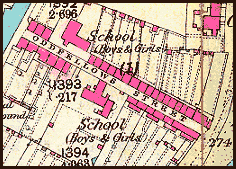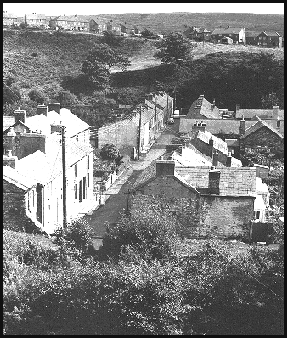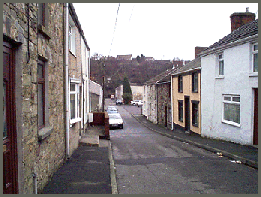
Gough Buildings 5
Oddfellows Street
 This 1877
map shows the street stretching from the canal (left)
to the edge of the river Tawe (right). These workmen's
cottages housed the workers in the mining and iron industries
and their families, and were the focus for a rich community life
where families supported each other in difficult times.
This 1877
map shows the street stretching from the canal (left)
to the edge of the river Tawe (right). These workmen's
cottages housed the workers in the mining and iron industries
and their families, and were the focus for a rich community life
where families supported each other in difficult times.from the
collection of
the late
John Morris

This photograph of Oddfellows Street from Graigfach was taken in the 1950's and reveals some of the traces of the 19th century Ystradgynlais.
The canal runs behind the trees in the foreground. The buildings set back on the left of the street are the houses which once formed the nonconformist school while the long roof line on the right (at right angles to the street) is the old schoolroom which later became a Sunday school and has since been demolished.

Oddfellows Street in the autumn of 1998 showing the houses as
they look after the renovations and alterations of recent years.